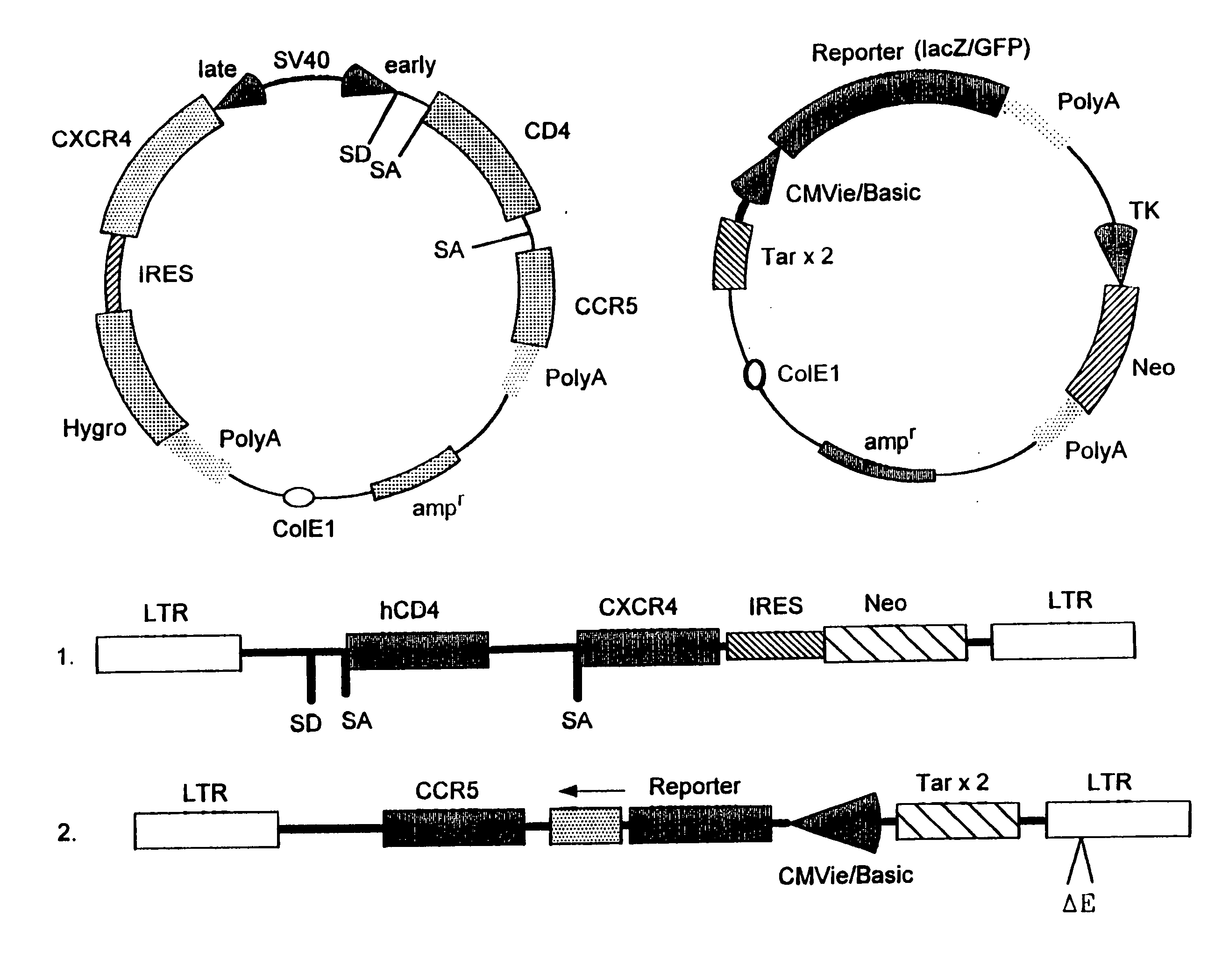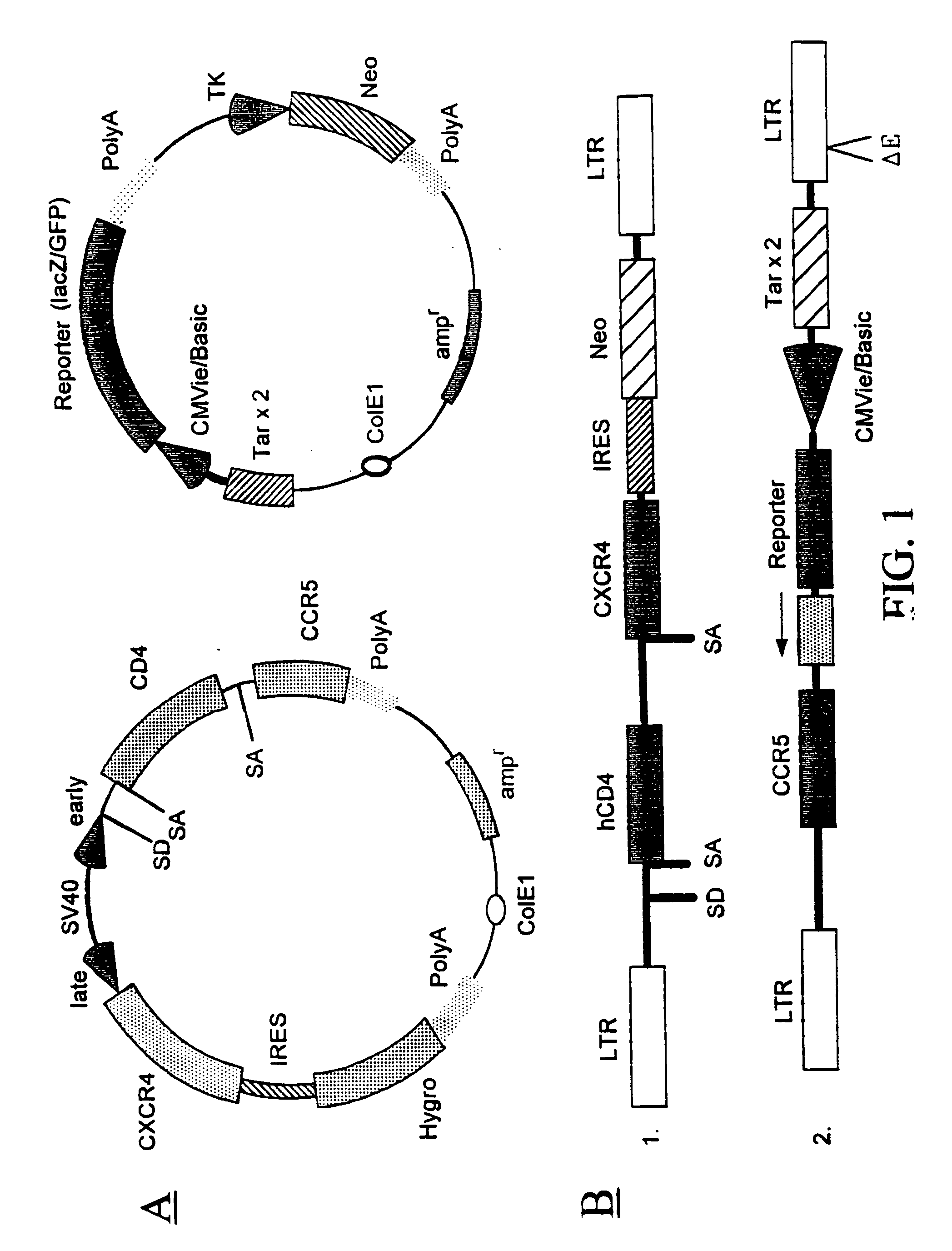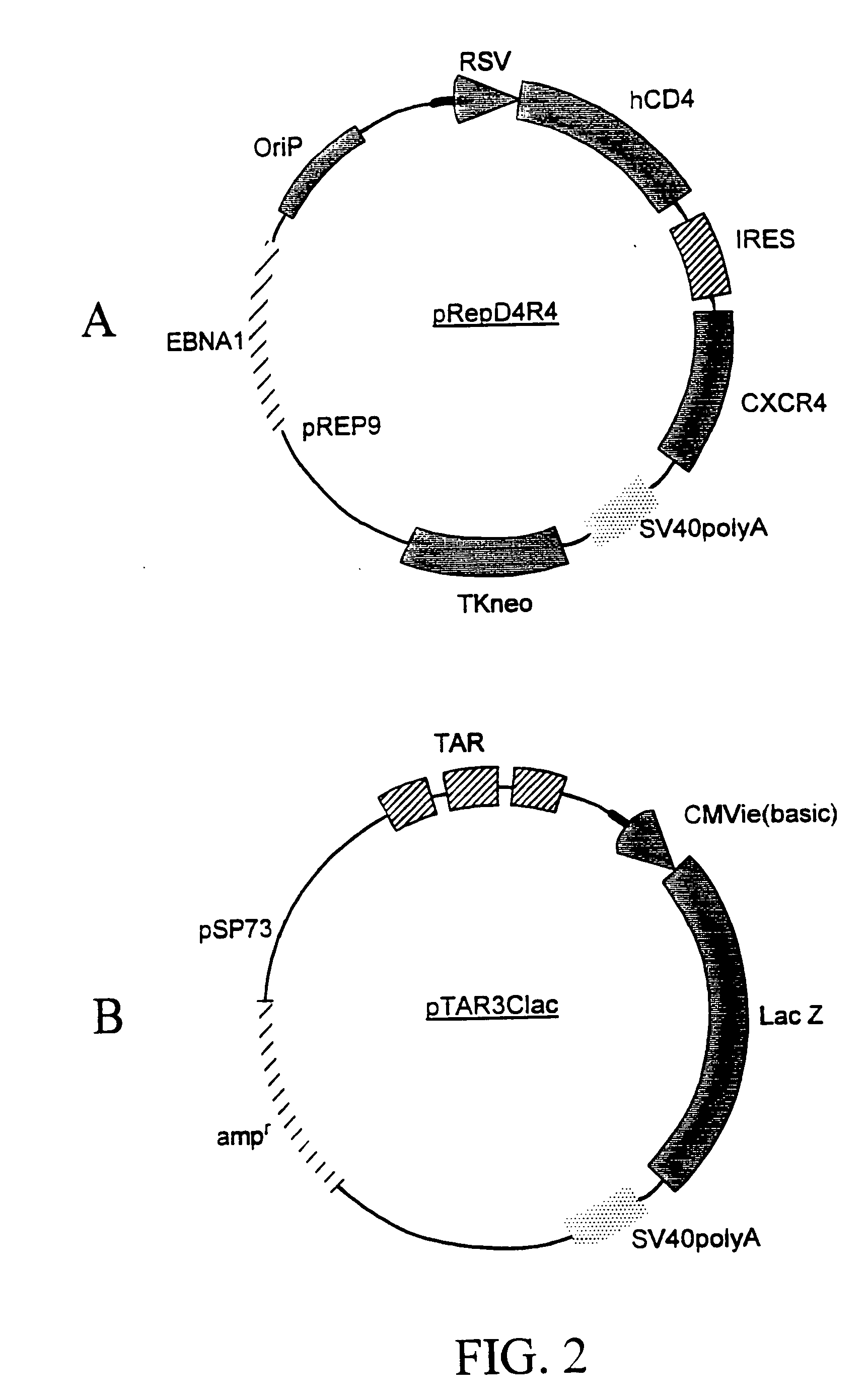Infection of the CD4.sup.+ subclass of T-lymphocytes with the HIV type-1
virus (HIV-1) leads to depletion of this essential
lymphocyte subclass which inevitably leads to opportunistic infections, neurological
disease,
neoplastic growth and eventual death.
However, currently used ELISA assays may not be sensitive enough to detect all
HIV infected individuals.
There may be a significant
time lag between detection of HIV infection and seroconversion.
In addition, some
HIV infected but seronegative individuals might never convert but will remain infected throughout theirs lives.
Thus, such a
screening method may generate false negatives, which in turn may increases the probability of HIV infection of healthy people by these individuals.
The failure of the
ELISA assay to detect all
HIV infected individuals places the
population at risk by misleading the HIV infected individuals that they are not infected, thereby making it more likely that the HIV infected individuals will unknowingly infect others.
Treatment following a prolonged single
drug regimen has met with limited success where there is relatively small drop in
viral load, followed by a rise in amount of detectable
virus in blood, presumably due to the development of
drug resistance strains of HIV.
However, current studies showed that a growing number of patients are failing
combination drug regimens (Deek, S. et al. the 5th Conference on Retroviruses and
Opportunistic Infection, Chicago, Feb. 1-5, 1998, Abstract #419).
Finding an effective salvage therapy for them is difficult.
Such assays may not be readily applied to clinical isolates of HIV.
One of the disadvantages associated with the syncytial focus
assay is that it may only detect HIVs that exhibit a syncytial-inducing
phenotype and that in practice may only be obtained from aminority of specimens from seropositive individuals.
And the syncytial focus assays may not be used for screening for drugs that affect posttranslational
processing, such as glycosidase and
protease inhibitors.
On the other hand, the p24 and RT assays may also suffer the limitations of difficult quantification, low sensitivity and unproven clinical validity.
The limitation of this
assay is that since only the
protease and RT are derived from patient, it results in the testing of a recombinant HIV
genome that only represents about 20% of original patient viral
genome.
In comparison, assays for detecting HIV infection using the
cell lines developed by others suffer from insensitivity or are only sensitive to laboratory-adapted strains of HIV.
These methods are labor-intensive, time-consuming, expensive, and, in the case of the RT
assay, requires the use of radioisotopes.
Use of PBMCs has resulted in variable results due to donor-to-donor variation.
Other concerns have been the effort and expense involved in the isolation and culture of PBMCs and the fact that it takes 4 to 10 days to generate a viral end-point because of the
kinetics of
virus replication and virus spread throughout the PBMC culture.
One of the disadvantages with PBMC cells is that these primary cells have to be obtained from donors, carefully cultured and freshly prepared each time.
It is costly and inefficient to use these primary T-cells for commercial purposes.
In addition, the permissiveness of these T-cells to different strains of HIV may vary with the donor, thus causing
ambiguity in clinical testing.
For example, a
stable cell line derived from PBMC can be susceptible to infection of HIV.
Without switching to new effective antiretroviral drugs, the drug-resistant viruses can quickly spread in the patient, overgrow the original drug-susceptible virus
population, and cause "viral rebound," i.e., a significant increase in the replication of the virus, a return to high
viral load measurements, and ultimately the death of the patient.
While the most sensitive PCR-based assay that has been developed may not be sensitive enough to detect
plasma HIV
RNA below 50 copies / mL,
false positivity for mutations may be generated due to carry over from other HIV samples in the laboratory or from random
polymerase errors during PCR.
The whole process may take more than two weeks to generate results and demand for
highly skilled personnel to perform the test.
Furthermore, because the HIV contained in the sample from a patient may potentially harbor drug resistances strains, conventional drug screening may not have been effective in finding the optimum
drug regimen.
However, it has been observed that the
late stage inhibitors only show lower levels of inhibition in such assays since the
late stage inhibitors do not inhibit initial infection but the spread of the virus among the indicator cells.
 Login to View More
Login to View More 


